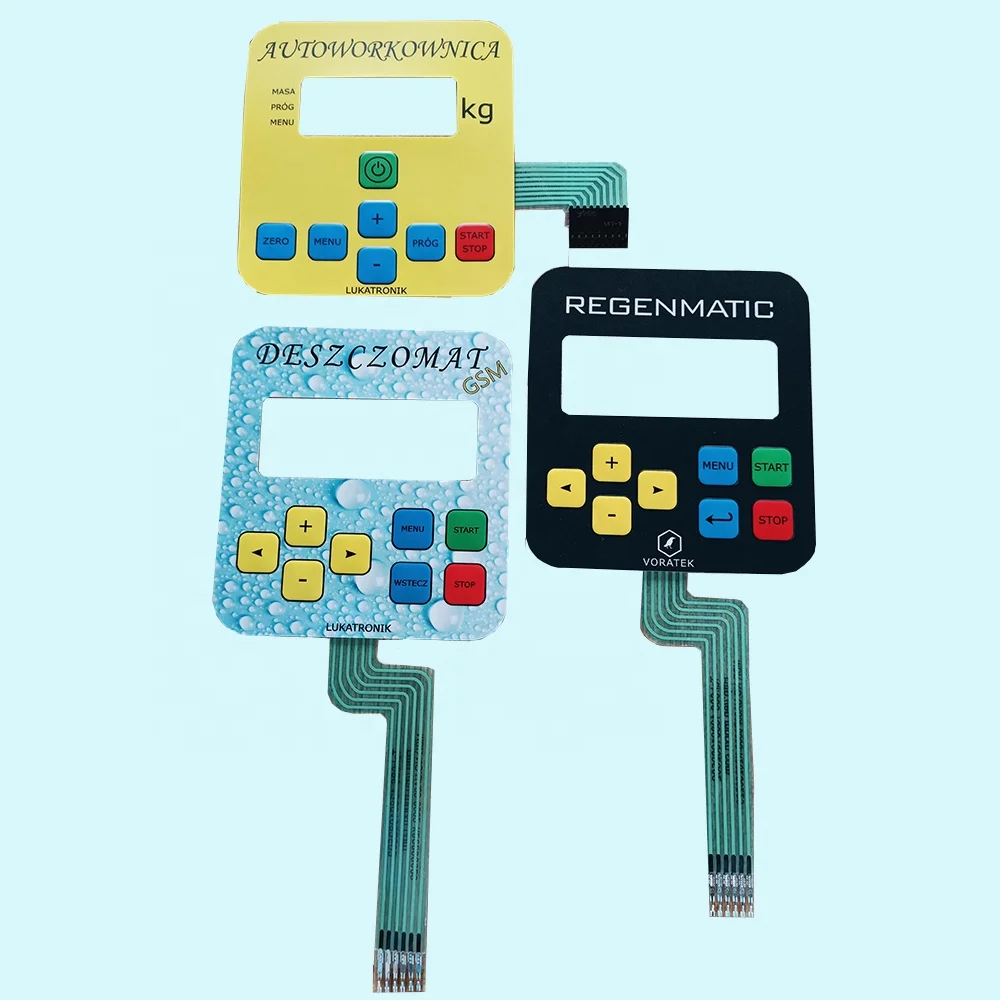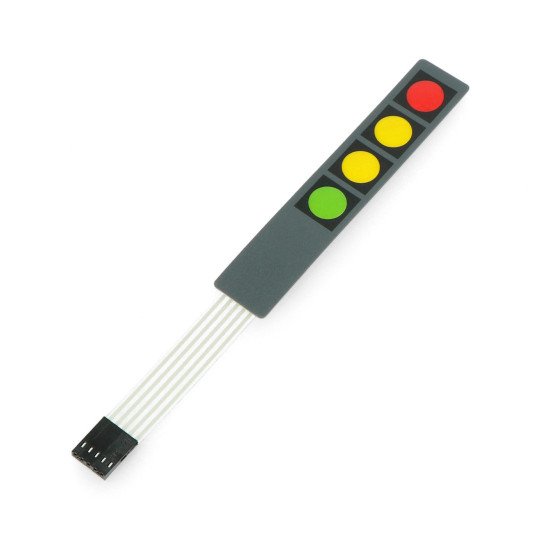Membrane Switch Manufacturer Focused on User-Centered Design
Membrane Switch Manufacturer Focused on User-Centered Design
Blog Article
Recognizing the Significance of Membrane Switch in Modern Electronics and Their Applications
Membrane switches over act as an essential element in contemporary electronic devices, providing a reliable interface for individual communication. Their personalized and lightweight nature makes them appropriate for a series of applications across diverse sectors. Understanding their essential parts and advantages can supply understandings into their growing importance. As technology continues to breakthrough, the evolution of Membrane switches questions about their future applications and design advancements. What exists in advance in this dynamic field?

What Are Membrane Buttons?
Membrane buttons are necessary elements in modern-day electronic devices, serving as individual interfaces that facilitate interaction between devices and individuals. These buttons contain a number of layers, including a visuals overlay, an adhesive layer, and a circuit layer, every one of which work with each other to produce a useful and sturdy interface. The style permits a level, low-profile option that can be customized relating to size, shape, and aesthetic appearance, making them appropriate for various applications, from consumer electronic devices to medical gadgets. The responsive feedback given by Membrane changes boosts user experience, while their resistance to dust and dampness makes them excellent for challenging environments. Moreover, Membrane switches can incorporate features such as backlighting and printed graphics, additionally expanding their usability. Their convenience and toughness make them a favored selection in markets where reliability and simplicity of use are paramount, eventually adding to the seamless procedure of contemporary electronic devices.
Key Components of Membrane Switches
While different elements add to the functionality of a membrane button, 3 main layers play considerable duties in its design and procedure. The top layer, commonly made from a durable polymer, serves as the interface for individual interaction, commonly including published graphics and symbols. Under this is the spacer layer, which keeps the needed range between the top layer and the circuit layer. This spacer layer assurances that the switch activates only when pushed, protecting against unintended inputs. The circuit layer includes conductive traces that complete the electric circuit when the top layer is dispirited. These traces can be made from numerous products, including copper or silver. Together, these parts create a durable and trusted device that is compact and functional, appropriate for a wide variety of electronic applications, from household devices to clinical devices. Understanding these vital components is crucial for appreciating the general functionality of Membrane buttons.
Benefits of Using Membrane Changes

Membrane Switch Manufacturing Refine
Comprehending the Membrane button manufacturing procedure exposes the intricate actions included in producing these necessary components. The process generally begins with the layout phase, where requirements and designs are developed using specialized software program. Following this, the visuals overlay is published on a versatile substratum, typically utilizing high-resolution printing strategies to guarantee clearness and precision.Next, the glue layers are used, which serve to bond the different parts with each other. The circuit layers, made from conductive inks or materials, are after that published onto a separate substrate. These layers are thoroughly straightened and laminated to create a practical switch.After assembly, the switches go through examining to verify performance and toughness. Quality control actions are applied throughout the procedure to recognize and correct any kind of problems. The completed Membrane switches are packaged and prepared for distribution, prepared to meet the demands of contemporary digital applications.
Applications of Membrane Switches in Different Industries
Membrane switches are increasingly utilized across various industries, specifically in medical equipment and consumer electronics. In the clinical area, they give reliable control interfaces for devices that need accurate procedure. In customer electronics, these switches boost customer interaction by using sleek and receptive interfaces.
Medical Equipment Control
Many modern-day clinical gadgets use Membrane buttons for streamlined operation and improved individual interaction. These switches offer a reputable, resilient user interface for a range of applications, including analysis devices, client monitoring systems, and medical instruments. Their personalized styles allow for details designs that can accommodate the one-of-a-kind requirements of healthcare specialists, guaranteeing intuitive navigating and efficient accessibility to necessary functions. In addition, Membrane buttons are resistant to impurities, making them suitable for clean and sterile atmospheres. The responsive feedback they supply can improve individual self-confidence, decreasing the threat of errors throughout vital medical treatments. Overall, the combination of Membrane switches in clinical equipment considerably adds to enhanced functional efficiency and individual safety and security in healthcare setups.
Consumer Electronics Interfaces
In the domain name of customer electronics, Membrane switches play a crucial function in boosting user interfaces across a wide variety of devices. These switches are indispensable to items such as remote controls, microwaves, and video gaming consoles, supplying a easy to use and reliable user interface. Their layout enables a seamless combination of graphics and performance, making it possible for suppliers to create sleek, modern-day visual appeals without jeopardizing functionality. Membrane switches are likewise known for their durability, often withstanding considerable usage and direct exposure to numerous ecological problems. In addition, they can incorporate features like backlighting and tactile responses, more boosting the customer experience. As customer needs for innovative yet user-friendly interfaces grow, Membrane switches over proceed to be an important component beforehand digital tool performance.
Style Considerations for Membrane Switches Over
Designing effective Membrane switches over needs cautious attention to numerous aspects that affect both capability and individual experience. One important consideration is the selection of products, as they can affect toughness, tactile feedback, and visual charm. Selecting an appropriate adhesive is necessary for ensuring long-term attachment and resistance to environmental factors.In addition, the format and design of the button need to accommodate customer communication, with button dimensions and spacing optimized for convenience of use. The incorporation of graphics and labeling need to prioritize quality and exposure under various lighting conditions.Consideration of electric features, such as actuation force and button level of sensitivity, will certainly enhance the responsiveness of the Membrane switch. The layout ought to suit manufacturing procedures to guarantee cost-effectiveness and prompt manufacturing. In general, a well-balanced layout improves both the functionality and the individual experience of Membrane switches in about his modern-day electronic devices.

Future Fads in Membrane Switch Innovation
As modern technology proceeds to evolve, Membrane switches are poised to integrate new innovations that will improve their capability and application in various fields. One significant pattern is the consolidation of adaptable and sturdy materials, which will enhance the life expectancy and dependability of these buttons. Boosted surface area appearances and personalized graphics are likewise prepared for, allowing for more user-friendly individual interfaces.Moreover, the combination of wise innovation, such as touch-sensitive surfaces and haptic feedback, is expected to enhance user communication, making Membrane switches a lot more receptive and interesting. Additionally, advancements in published electronics will allow much more complex circuitry within thinner profiles, further increasing layout possibilities.Sustainability will certainly likewise play an important role in future developments, as suppliers check out green products and production processes. On the whole, these patterns will assure that Membrane switches continue to be pertinent and vital in an interconnected and progressively digital globe.
Frequently Asked Questions
Exactly How Do Membrane Switches Over Contrast to Traditional Mechanical Buttons?
Membrane switches over offer benefits over conventional mechanical buttons, including reduced dimension, lighter weight, and improved longevity. They commonly supply a secured surface, boosting resistance to dust and dampness, making them optimal for varied applications.
What Products Are Frequently Used in Membrane Switch Construction?

Can Membrane Switches Over Withstand Extreme Environmental Issues?
Membrane buttons can withstand extreme ecological conditions, depending on their style and products. Top notch constructions usually feature longevity against temperature level fluctuations, moisture, and exposure to chemicals, making them appropriate for numerous demanding applications throughout sectors.
How Much Time Do Membrane Switches Commonly Last Prior To Failing?
Membrane changes typically display a life-span varying from 1 to 10 million actuations, depending on aspects such as use frequency, ecological conditions, and making quality. Regular maintenance can prolong their resilience and operational dependability substantially.
Are Membrane Switches Over Customizable for Particular Applications?
Membrane switches are undoubtedly personalized for specific applications. They can be customized in capability, dimension, and layout, allowing manufacturers to meet special customer requirements and boost product appearances while keeping operational efficiency and durability. Membrane buttons are essential components in contemporary electronic Going Here devices, serving as user interfaces that promote communication in between devices and users. The responsive responses supplied by Membrane switches boosts individual experience, while their resistance to dust and moisture makes them perfect for testing atmospheres. The incorporation of graphics and labeling should prioritize clearness and presence under numerous lights conditions.Consideration of electric qualities, such as actuation force and button level of sensitivity, will certainly enhance the responsiveness of the Membrane button. Improved surface area appearances and personalized graphics are also prepared for, enabling for more instinctive individual interfaces.Moreover, the combination of clever modern technology, such as touch-sensitive surface areas and haptic responses, is expected to enhance customer communication, making Membrane switches over more interesting and receptive. Membrane changes offer benefits over conventional mechanical buttons, consisting of decreased size, lighter weight, and improved durability.
Report this page